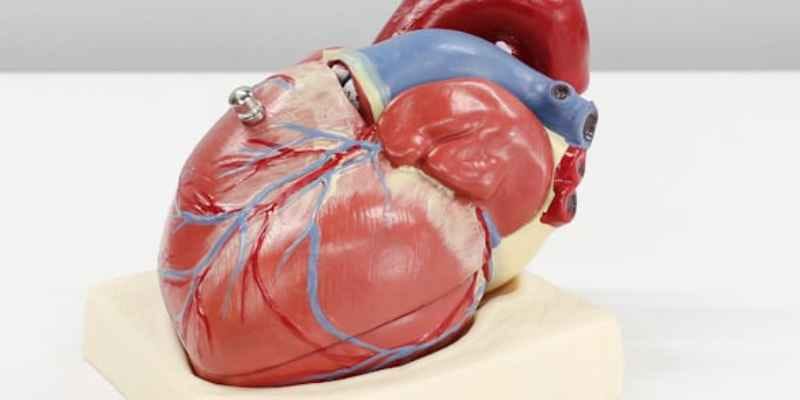Advertisement
Heart block, also known as atrioventricular block, is a conduction disorder in which the signals for the regular pumping of the heart are disturbed, leading to various consequences. The transmission of impulses from the atria to the ventricles is disrupted, and arrhythmias occur.
The sinoatrial node or SA node in the heart, located at the right atrium, is called the hearts natural pacemaker. This is attributed to the fact that the SA node can generate the impulses in the heart, i.e., it forms the foundation of the hearts conduction system. The impulses generated here are passed to the atrioventricular node or AV node, which passes through the Bundle of His and Purkinje fibers.
The AV node transmits impulses from the SA node the natural pacemaker to the ventricles. Any disorder in the AV node can lead to a delay in the transmission of impulses. As a result, the hearts regular rhythm is disturbed, generating abnormal impulses and cardiac arrhythmias. This whole condition is termed heart block, as the impulses are unable to transmit correctly.

Typically, a heart block is divided into three types depending on how the impulses are transmitted. These types are:
In this category, there is only a slight delay in transmitting impulses from the SA node to the AV node, and the symptoms are absent. Such cases do not require any treatment, and the condition is usually temporary.
Second-degree heart block is a partial blockage in the transmission of impulses. It is further divided into two types, depending on the areas of the heart which are affected.
In Mobitz type 1, there is a disorder in the functioning of the AV node itself that results in the gradual production of slow heartbeats and a skipped heartbeat. It can be due to physiological causes and can occur during rest and sleep. It is also termed the Wencklebach phenomenon.
In Mobitz type 2, the problem usually occurs in the Purkinje fibers or His bundle. In this case, only two situations can occur,i.e., a normal heartbeat or a missed or skipped heartbeat.
In third-degree heart block, the hearts conduction system fails to perform. As a result, the atria and ventricles beat independently from each other without a synchronization or the normal heart rhythm.
As the situation deteriorates and the transmission of impulses is blocked, the symptoms of the heart block begin to manifest. In this case, the most common symptoms are:
There are several causes of a heart block. Some of these causes are:
As the name indicates, heart block can prove to be a hazardous and even fatal condition if not addressed on time. There are various complications associated with a heart block. Some of these complications are:
Owing to the disruption in the transmission of impulses and blood supply, a cardiac arrest can occur, generally in the cases of third-degree heart block.
As the person having a heart block is likely to have a sudden loss of consciousness, there is an increased risk of injury in case the person collapses.
Due to the failure of the conduction system, the organs may not get their adequate blood supply, leading to the failure of vital organs.
Usually, in third-degree heart block, the oxygen and blood supply to the brain is disrupted. This can lead to severe outcomes, even coma, and death, if the heart function is not restored within seconds.
A heart block typically goes unnoticed as the symptoms are not very elaborate. However, there are some specific tests to diagnose a heart block. Some of these tests are:
A detailed history is crucial to look for any signs and symptoms related to a heart block and to rule out any genetic conditions that can lead to a heart block. The patient should also be asked about the medications used in the past, as certain drugs can also cause a heart block.
During examination, the pulse, irregular heartbeats, heart sounds, and blood pressure must be closely monitored to form a firm diagnosis.
An ECG is a standard test for a heart block. The following findings can be seen on an ECG.
In first-degree heart block, PR interval is prolonged, i.e., >0.20 seconds.
In Mobitz type 1, the PR interval is prolonged.
In Mobitz type 2, the PR interval is regular. However, the P wave may be absent or skipped.
In third-degree heart block, narrow or broad QRS complexes are observed.

This test can be done to accurately determine the area of the heart responsible for a heart block.
In mild cases, a temporary artificial pacemaker is inserted in the heart to guide the transmission of impulses. However, in extreme cases, a permanent artificial pacemaker can also be inserted and has a good prognosis generally.
In case of any other underlying condition, it is necessary to treat that before inserting a pacemaker. Lifestyle modifications can also help in some instances.
Heart block is a subtle yet disastrous disease of the heart, which can lead to serious complications and even prove fatal if not treated promptly.
Advertisement

By Mason Garvey/Mar 16, 2025

By Sid Leonard/Mar 17, 2025

By Elva Flynn/Dec 28, 2024

By Noa Ensign/Jan 13, 2025

By Elva Flynn/Mar 17, 2025

By Triston Martin/Dec 28, 2024

By Isabella Moss/Nov 14, 2024

By Gabrielle Bennett /Mar 16, 2025

By Maurice Oliver/Nov 14, 2024

By Celia Kreitner/Mar 01, 2025

By Georgia Vincent/Nov 21, 2024

By Madison Evans/Mar 18, 2025